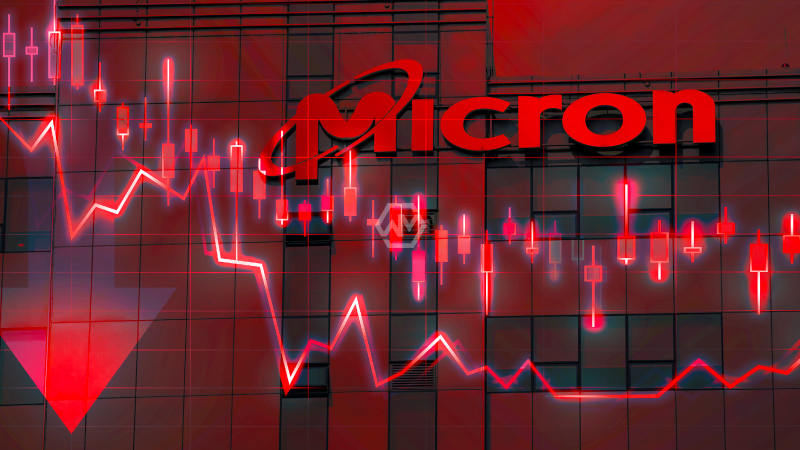- Micron Technology Inc., suffered a greater loss than expected in the most recent quarter.
- In the fiscal Q1, the business anticipated a loss of up to $1.14 per share, excluding certain factors.
- By 2025, Micron anticipates a significant improvement in the industry’s prospects.
The largest US manufacturer of memory chips, Micron Technology Inc., suffered a greater loss than expected in the most recent quarter, showing that the industry downturn is still having an impact on the company.
In the fiscal first quarter, the business anticipated a loss of up to $1.14 per share, excluding certain factors. However, it is anticipated that revenue will begin to increase during this time, with Micron forecasting sales of $4.2 billion to $4.6 billion, up from an estimate of $4.21 billion.
Micron Technology
The year 2023 has been difficult for Micron and its rivals Samsung Electronics Co. and SK Hynix Inc. because consumers in their primary markets—personal computers and smartphones—have reduced orders as a result of weak demand and surplus part inventories. According to the analysis, investor hope for a profit recovery may be overblown.
Sanjay Mehrotra, chief executive officer, claimed that his business has taken strong steps on supply and cost that will benefit Micron as the memory chip market rebounds in 2024 and then achieves record levels once more in 2025.
Customers are now placing orders at levels that match the demand for their products as the weight of excess inventory has been alleviated. The cost of Micron‘s goods is rising, and the rate at which prices are rising is accelerating.
Five consecutive quarters of dropping sales resulted in a 40% drop in Micron’s revenue to $4.01 billion for the three months that ended in August. In the first fiscal quarter, which spans from October to November, it is predicted that sales will start to increase once more.
By 2025, Micron anticipates a significant improvement in the industry’s prospects, particularly as new, more expensive memory chip types are required by artificial intelligence systems. The market for traditional servers is still “lackluster,” and the outlook is still uncertain.



